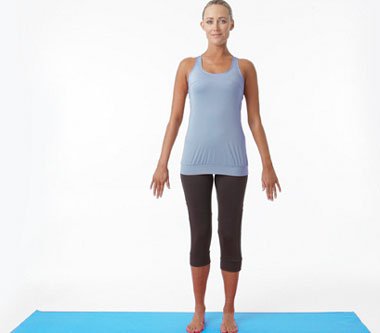How to do Revolved Downward-Facing Dog, Parivrtta Adho Mukha Svanasana
Yoga classes in Milton Keynes
Parivrtta Adho Mukha Svanasana – Revolved Downward-Facing Dog is a variation on the popular pose and adds a deeper stretch to the hamstrings while enhancing detoxification, balance, and full-body coordination. It may also relieve arthritic pain in the shoulders. Adding a twist to the posture challenges strength, whilst aiding and stimulating digestion. It is an exhilarating pose!
How to: Revolved Downward-Facing Dog Pose
1. Start in Downward Facing Dog Pose.
2. On an inhalation, lift your left hand and reach it beneath your torso and around to your right thigh. Allow your waist and torso to twist open to the right. Work toward placing your left hand on the ground to the outside of your right foot. If that is not possible yet, rest your hand on the outside of your right leg’s shin or upper thigh.
3. Turn your head to look underneath your right arm. Keep your gaze soft. If you have no neck pain, gaze up at the ceiling.
4. Hold for 5-10 breaths. To release, inhale as you un-twist and return your left hand to the mat. Come back into Downward-Facing Dog. Repeat the pose on the other side for the same amount of time, and then return to Downward-Facing Dog again.
Benefits of Revolved Downward-Facing Dog Pose
The Revolved Downward-Facing Dog has a lot of benefits for all yoga students. Some of the major benefits are:
- Full-body stretching
- Strength-building
- Increased blood flow
- An energized and rejuvenated nervous system
- Relief from stress, headaches, fatigue, poor digestion, and back pain
- Helps prevent osteoporosis.
- Improves digestion.
- Relieves back pain and fatigue.
- Therapeutic for asthma, flat feet and sinusitis.
Tips
Gaze: Up to the ceiling
Counter poses:
- Mountain Pose
- Wrist Releases,
- Standing Half Bow Pose
Lighten:
- Bend the knees in toward the chest.
Effect: Strengthening, Invigorating
Revolved Downward-Facing Dog, Parivrtta Adho Mukha Svanasana Counter Poses
In yoga we use a counter pose in a sequence; For example, a twist follows a backbend to “neutralise” the spine, or a forward bend follows a backbend to help lengthen the spine and calm the nervous system.




